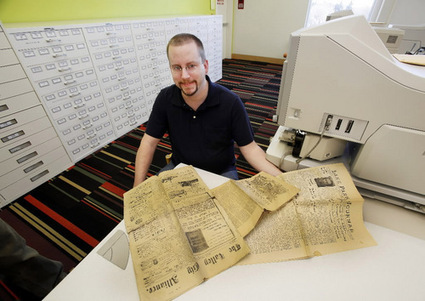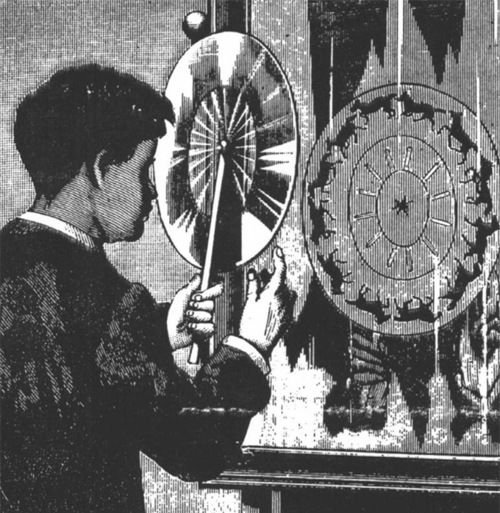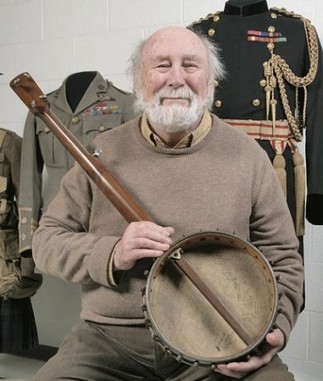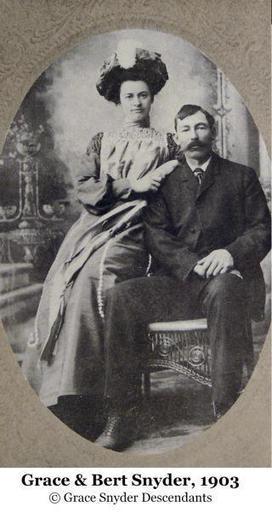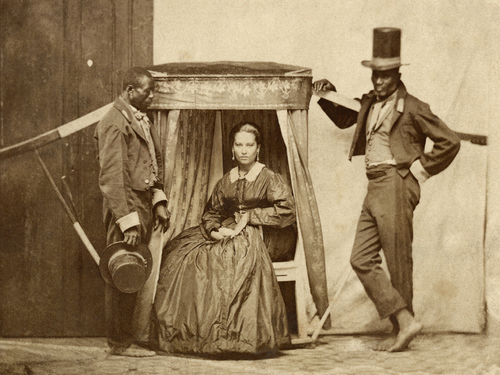In The Beginning…
Dolls, the playthings we know today, began their lives as something quite different. Called poppets or puppets originally, they were created as educational tools and for use in religious ceremonies.
 As icons, creche figures, totems, effigies, votive artifacts, offerings, masks, and other stand-ins for human figures, they were ritualistically used. Those poppets lucky enough to have survived the ceremonies were often given to children as playthings. Certainly children delighted to have them — for just as use of poppets in religious ceremonies began to wane, dolls started to become the playthings we know today.
As icons, creche figures, totems, effigies, votive artifacts, offerings, masks, and other stand-ins for human figures, they were ritualistically used. Those poppets lucky enough to have survived the ceremonies were often given to children as playthings. Certainly children delighted to have them — for just as use of poppets in religious ceremonies began to wane, dolls started to become the playthings we know today.
These early poppets were like their earlier votive artifact incarnations in two ways.
 One: The form they took. Like the ceremonial poppets, these early dolls were in adult rather than child form. Kid leather bodies were preferred over cloth ones because the leather was much better at forcing the stuffed poppet bodies into the shapely figure of a corseted woman. Something the fashion industry quickly latched onto, using poppets to sell the fashions of the day (until print advertising became a more economical option, anyway). This is at least partly why dolls made prior to the 1850s are not baby dolls.
One: The form they took. Like the ceremonial poppets, these early dolls were in adult rather than child form. Kid leather bodies were preferred over cloth ones because the leather was much better at forcing the stuffed poppet bodies into the shapely figure of a corseted woman. Something the fashion industry quickly latched onto, using poppets to sell the fashions of the day (until print advertising became a more economical option, anyway). This is at least partly why dolls made prior to the 1850s are not baby dolls.
Two: What they were made from. Wax had widely used in modeling to make the religious effigies and votive artifacts, dating back to 14th century. As dolls grew in popularity, it was only a matter of time before those skilled wax model makers began to see how production of dolls would expand their markets — and income.
Once people could see the beauty of these wax dolls up close, they became quite popular. By the end of the 18th century, wax dolls (wax heads attached to cloth doll bodies by sew-holes on the shoulder plate) were being produced in England, France, and Germany.
Waxing Nostalgic Over Wax Dolls
Wax may not seem to be a great material for making dolls, especially for children. But it makes sense when you compare wax to the other materials available at the time.
Prior to the manufacture of wax dolls, the dolls children had were either ceremonial cast-offs or handmade dolls of wood or cloth. Sometimes the kids themselves made crude little dolls from sticks and the odds and ends adults had cast off as garbage. Remember, there was no plastic or even composition at this time. And wax doll heads didn’t shatter when dropped, like china, bisque, or porcelain dolls.
But the true beauty of wax dolls lies in, well, the wax itself!
For many of us today, all we see are the old, aged, discolored, and cracked wax dolls. But when wax dolls are new, they are incredibly lifelike. Wax can be tinted with beautiful, realistic skin tones. The facial features, like cheeks and mouths, can be enhanced with paint. And when dusted with a fine pumice to remove the shine, the whole surface looks like translucent human skin. Those dolls must have seemed like magic!
Three Basic Types Of Wax Dolls
Antique wax dolls are categorized by the way they were made.
 1) Poured Wax Dolls Poured wax dolls, sometimes called “thick wax” or “solid wax” dolls are made by pouring a molten wax blend of bleached beeswax, coloring, other additives into a heated plaster mold, resulting in a entirely wax head.
1) Poured Wax Dolls Poured wax dolls, sometimes called “thick wax” or “solid wax” dolls are made by pouring a molten wax blend of bleached beeswax, coloring, other additives into a heated plaster mold, resulting in a entirely wax head.
The eyes were cut open and blown or moulded glass eyes were inserted; a small amount of hot wax was used to fix the eyes in place. The hair is either mohair or human hair, quite often inserted a few strands at a time.
Usually poured wax dolls also have poured wax arms and legs, which were also sewn onto the body.
The majority of these poured wax dolls were made in England. These were the first wax dolls; and the most expensive.
 2) Wax Over Dolls These less-expensive, later, dolls were made by dipping heads made of papier mache (and even later, composition) into melted wax. This overlay of wax allowed for tinting and a more lifelike appearance than a standard papier mache head. Manufacturers experimented with single and multiple layers of wax, although the final thickness was normally no more than 3 millimeters thick.
2) Wax Over Dolls These less-expensive, later, dolls were made by dipping heads made of papier mache (and even later, composition) into melted wax. This overlay of wax allowed for tinting and a more lifelike appearance than a standard papier mache head. Manufacturers experimented with single and multiple layers of wax, although the final thickness was normally no more than 3 millimeters thick.
The majority of these wax over dolls were made in Germany and France, however, the English made some wax over dolls as well. One English version is the egg-shaped or slit-head wax dolls. These wax dolls are so named for the middle incision where the doll’s hair was inserted. (This hair, usually human, was then parted and drawn to each side.) These early wax dolls usually had dark eyes, without pupils.
While these wax over dolls were much less expensive than their poured wax counterparts, wax over dolls came in many different styles.
Many of the wax over dolls have mohair wigs, but some dolls had molded bonnets and hairstyles, such as the “Pumpkin-Head” or “Squash-Head” dolls with molded hair arranged in a pompadour style and the Alice hairstyle with headband.
Wax over dolls also had variations in their glass eyes: Either fixed or sleep eyes. Yes, as early as 1825, there were sleep eyed dolls! Often called wire-eyed wax dolls, the eyes were worked by a wire (or string) which came out at the side of the doll’s waist. French versions of these dolls usually have paperweight eyes, while the German dolls have spun glass eyes which are flatter in appearance.
There were also multi-faced wax over dolls. A single head was molded with two or three faces; you turned the head around to change the doll’s face.
Body types can vary widely, including almost any number of combinations of cloth, wooden, leather, composition, or wax over limbs attached to cloth stuffed bodies. Some dolls had the Motschmann floating-joint body.
Some of these early wax over dolls even had the ability to cry by pulling a string!
 3) Reinforced Wax Dolls Reinforced dolls are later dolls which are rather a combination of the other two types of wax dolls. First, a wax doll head was poured — and then the inside was reinforced by using either plaster or strips of cloth soaked in composition. This provided a stronger support layer to the wax.
3) Reinforced Wax Dolls Reinforced dolls are later dolls which are rather a combination of the other two types of wax dolls. First, a wax doll head was poured — and then the inside was reinforced by using either plaster or strips of cloth soaked in composition. This provided a stronger support layer to the wax.
While most of the reinforced wax dolls have closed mouths, like the other wax dolls, there are examples of reinforced wax dolls having open mouths. This is likely one of the benefits of the supportive reinforcement material. A few of these open-mouthed reinforced wax dolls even had wooden teeth.
Most reinforced wax dolls have wigs made of mohair or human hair, but some of them have inserted hair. Like the other wax dolls, they too have glass eyes.
Reinforced wax dolls had a variety of body types; the most common being a cotton or muslin body, with either composition or wax arms and legs. These dolls were primarily made in Germany.
The Wax Doll Sensation
Most wax dolls are without maker marks. (There were some later wax dolls do have stamps on the torso to identify the maker; but this is rare.) However, we do know of one of the most famous names in wax dolls: Madame Montanari.
 Madame Augusta Montanari may be the best known wax doll-maker of all time, but not much is known about her or her wax sculpture studio. We do know that she and her poured wax works first attracted attention at London’s Crystal Palace Exposition in 1851. There she and her winning exhibit of dolls created a sensation that led to imitation, the sincerest form of flattery.
Madame Augusta Montanari may be the best known wax doll-maker of all time, but not much is known about her or her wax sculpture studio. We do know that she and her poured wax works first attracted attention at London’s Crystal Palace Exposition in 1851. There she and her winning exhibit of dolls created a sensation that led to imitation, the sincerest form of flattery.
Montanari’s dolls were beautiful. Each strand of human hair on the doll’s head was set directly into the wax with a hot needle and then an iron roller was used to gently but firmly roll over the head. This secured the strands of hair so well that the doll’s hair could be combed without causing any damage or loss.
Her exhibit included male and female dolls — and what is said to be the first baby doll! Many also credit Montanari with creating the first character dolls as each doll was dressed for age and occasion, like an actual person. Eventually, Montanari would create wax dolls for royalty and other wealthy persons, including wax dolls representing some of Queen Victoria’s children. These are called the Royal Wax Baby Dolls.
Very few dolls survive with proof of being made by Montanari, Occasionally, one is found with what is believe to be the Montanari signature on the cloth body. But good indications of an authentic Montanari wax doll are the well-defined fingers, chubby arms of wax (or later, composition), and a more natural-looking down-turned mouth.
Historians are not exactly sure when Montanari passed away. We know she left the studio to her son, who had worked with her making the dolls; but by 1890, the studio seems to have closed. By that time, composition and bisque dolls were so inexpensive that was dolls were on their way out. Montanari’s death seems to also mark the passing of wax dolls.
Spook-Tacular Antique Wax Dolls
It’s October, and with Halloween just around the corner it wouldn’t be right not to mention a few spook-tacular or creepy wax dolls.
As mentioned earlier, one of the earliest uses of poppets was for educational purposes. Among these were the medical dolls, like the ancient Chinese medical dolls. Since the doctors were not allowed to view or touch their modest female patients, the women were given a stick which they used to point at a small, usually ivory, medicine doll to show the doctor where they were hurt. But since we’re talking about wax dolls…
 In the late 17th century, wax modeler Gaetano Giulio Zumbo and surgeon Guillaume Desnoues, collaborated to solve a problem. At this time, there were few bodies available for dissection, and little way to preserve them — which made it difficult to properly educate medical students. However, by using wax modeling techniques it became possible to highlight specific bodily features and structures, painting and marking them, thereby making it easier to isolate and identify them and their functions. And, of course, these wax anatomical models did not decompose (or smell!). They could be stored and used again and again. That made these incredibly detailed wax anatomical models increase in popularity throughout Europe in the 18th century.
In the late 17th century, wax modeler Gaetano Giulio Zumbo and surgeon Guillaume Desnoues, collaborated to solve a problem. At this time, there were few bodies available for dissection, and little way to preserve them — which made it difficult to properly educate medical students. However, by using wax modeling techniques it became possible to highlight specific bodily features and structures, painting and marking them, thereby making it easier to isolate and identify them and their functions. And, of course, these wax anatomical models did not decompose (or smell!). They could be stored and used again and again. That made these incredibly detailed wax anatomical models increase in popularity throughout Europe in the 18th century.
Creating these wax medical models was highly labour-intensive: Plaster casts of dissected anatomical specimens were used to produce wax copies. Structures and vessels were painted (others imitated using thread) and then varnished to protect them. The finished pieces were then assembled to provide the illusion of living tissue. Many of these wax anatomical models were so beautiful that they were also sought by museums and private collectors.
 Like Augusta Montanari, there was a female wax sculpture artist at the forefront of these wax pieces. Her name was Anna Morandi Manzolini. She was an anatomical wax modeler during the Italian Enlightenment. During her lifetime (1714–74), she was celebrated for her exacting sculptures of human organs and systems. Crowds of physicians, medical students, and the curious would gather in her home to watch her anatomical demonstrations. Recently, there was a book written about her, entitled The Lady Anatomist: The Life and Work of Anna Morandi Manzolini.
Like Augusta Montanari, there was a female wax sculpture artist at the forefront of these wax pieces. Her name was Anna Morandi Manzolini. She was an anatomical wax modeler during the Italian Enlightenment. During her lifetime (1714–74), she was celebrated for her exacting sculptures of human organs and systems. Crowds of physicians, medical students, and the curious would gather in her home to watch her anatomical demonstrations. Recently, there was a book written about her, entitled The Lady Anatomist: The Life and Work of Anna Morandi Manzolini.
While these wax anatomical models were about doctors trying to save lives, there was another type of wax doll all about death.
Some of you may have heard of the many Victorian mourning practices, or mourning memori, such as postmortem photography and mourning hair art. These may seem morbid, but they were deeply valued traditions involving keepsakes to remember lost loved ones by. Another common practice in mourning at the turn of that last century was that of the effigy or burial doll.
 When a child had passed away, it was traditional for families who could afford it to have a life-size wax effigy of the child made for the funeral. The wax doll would be dressed in the infant or child’s own clothing. Most often the deceased child’s own hair would be used to make the doll even more realistic. These wax dolls usually show the deceased in repose, eyes closed, as if sleeping. The backsides of the heads were made flat so that the doll would lay nicely when laid out to rest.
When a child had passed away, it was traditional for families who could afford it to have a life-size wax effigy of the child made for the funeral. The wax doll would be dressed in the infant or child’s own clothing. Most often the deceased child’s own hair would be used to make the doll even more realistic. These wax dolls usually show the deceased in repose, eyes closed, as if sleeping. The backsides of the heads were made flat so that the doll would lay nicely when laid out to rest.
The effigy doll would be put on display at the wake. Often the doll would then be left by the grave-site. But we do know, from the effigy dolls which still exist today, that in some cases these wax effigy dolls were kept.
Wax effigies of infants would be placed in a crib, their clothes would be changed, and otherwise treated like a real baby. The bodies of these wax dolls would be cloth, weighted with sand to give it a more realistic feel when being held. Other times, the effigy itself would be framed. For older children, just the head and shoulders were created in wax effigy, also with the flat backsides, so that they could be placed in a picture frame. They were the ultimate way to attempt to reject the finality of death of a loved little one.
This practice of effigy dates back even further than the Victorians, to Roman times. But other than effigies made in marble or stone, none are left. In fact, these Victorian burial dolls and effigies themselves are extremely rare.
Some people consider these wax effigy grave dolls and the wax anatomical models to be creepy, if not disturbing. Some consider them history objects; others folk art. Still others think they are rare and valuable works of art.
Image Credits (In Order They Appear): Antique Roman wax masks; French P. Imans Full-Size Wax Mannequin Bust Doll; poured wax doll by Montanari; Wax over composition doll named ‘Violet’; antique reinforced wax doll; Montanari wax doll from Debra’s Dolls via Victoriana Magazine; antique Human Anatomical Model; wax sculpture of Anna Morandi Manzolini, created by the scientist-artist herself; wax effigy child doll.
 Perhaps the one area in which you are least likely to feel “like a museum” or a curator is that, at least in the beginning, you may not have defined your collection.
Perhaps the one area in which you are least likely to feel “like a museum” or a curator is that, at least in the beginning, you may not have defined your collection.







































